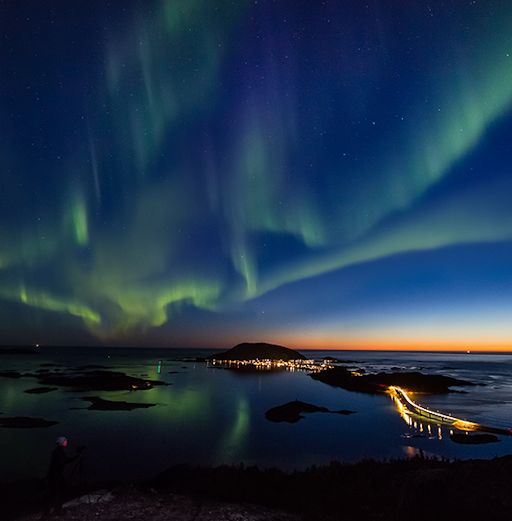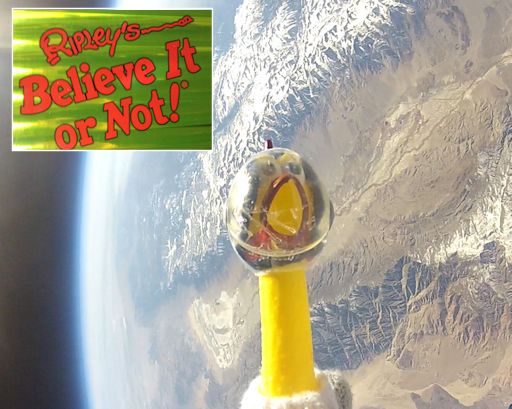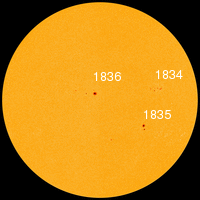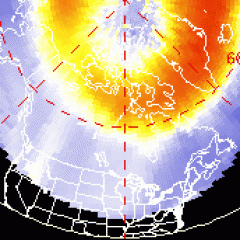QUIET SUN, SLIGHT CHANCE OF FLARES: The Earthside of the sun is quiet and stable today. NOAA forecasters estimate a slim 5% chance of M-class solar flares. The most likely source of an eruption would be sunspot AR1836, which is directly facing Earth. Solar flare alerts: text, voice.
GEOMAGNETIC UNREST: A CME expected to hit Earth's magnetic field over the weekend is either late or it hit with such weak impact that solar wind signatures barely show its arrival. Nevertheless, auroras did appear around the Arctic Circle on Sept. 1st and 2nd. Ole C. Salomonsen sends this picture from Tromsø, Norway:
"I am still not sure if the CME did hit Earth, " says Salomonsen, "but the flowing solar wind provided some quite beautiful auroras. Auroras combined with the colors from sunset to make this a magnifcient view."
More auroras could be in the offing. NOAA forecasters estimate a 45% chance of polar geomagnetic storms on Sept. 2nd as the solar wind continues to blow. Aurora alerts: text, voice.
SWx EXPERIMENT IN RIPLEY'S BELIEVE IT OR NOT: In March 2012, a group of high school students in Bishop, California, used a helium balloon to launch a pair of medical radiation badges to the edge of space. The goal of their experiment was to measure high-altitude radiation levels during a solar proton storm, which was underway at the time of the flight. Usually such experiments are published in academic journals, but this time Ripley's Believe it or Not! took an interest. Why? Because the students pinned the radiation badges to a rubber chicken:
Camilla the Rubber Chicken, formerly of NASA, crewed the suborbital capsule and wore the radiation badges on a hand-knit spacesuit. She reached an altitude of 128,000 feet, withstanding temperatures as low as -63o C and air pressures as little as 1% sea level during the nearly three hour flight. More information about the flight may be found on page 235 of Dare to Look!, Ripley's latest hardbound volume available from RipleyBooks.com. (Note: The same picture was selected by Time magazine as one of the most surprising photos of 2012.)
The students, who call themselves Earth to Sky Calculus, are still doing space weather research. Recent and ongoing experiments include payloads to measure the effect of solar flares on the ozone layer and to assess the ability of microbes to withstand radiation storms. You can follow their activities on Facebook and Twitter.

Solar wind
speed: 418.2 km/sec
density: 4.5 protons/cm3
explanation | more data
Updated: Today at 1447 UT
X-ray Solar Flares
6-hr max: B5 1400 UT Sep02
24-hr: B5 1400 UT Sep02
explanation | more data
Updated: Today at: 1400 UT
![]()
Daily Sun: 02 Sep 13
Sunspot AR1836 poses a continued threat for M-class solar flares. Credit: SDO/HMI
![]()
Sunspot number: 71
What is the sunspot number?
Updated 02 Sep 2013
Spotless Days
Current Stretch: 0 days
2013 total: 0 days (0%)
2012 total: 0 days (0%)
2011 total: 2 days (<1%)
2010 total: 51 days (14%)
2009 total: 260 days (71%)
Since 2004: 821 days
Typical Solar Min: 486 days
Update 02 Sep 2013
The Radio Sun
10.7 cm flux: 108 sfu
explanation | more data
Updated 02 Sep 2013
![]()
Current Auroral Oval:
Switch to: Europe, USA, New Zealand, Antarctica
Credit: NOAA/POES
![]()
Planetary K-index
Now: Kp= 2 quiet
24-hr max: Kp= 3 quiet
explanation | more data
Interplanetary Mag. Field
Btotal: 4.8 nT
Bz: 4.4 nT south
explanation | more data
Updated: Today at 1447 UT
![]()
Coronal Holes: 02 Sep 13
Solar wind flowing from the indicated coronal hole should reach Earth on Sept. 5-6. Credit: SDO/AIA.






